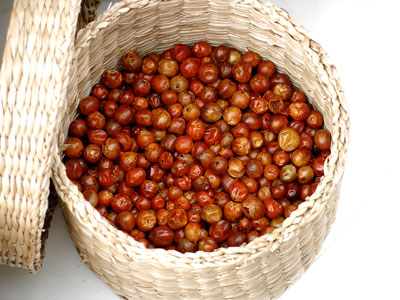
A name for the Tepin chilli. It is thought that Tepin, also called Chiltepin, is the original wild chilli - the plant from which all others have evolved. It is a tiny round berry slightly larger than a peppercorn. It is very decorative and bright scarlet in colour and, despite its high heat level, it is attractive to wild birds, who helped to distribute it across the prehistoric Americas. Birds do not have the same sensitivity to capsaicin as mammals as capsaicin acts on a specific nerve receptor in mammals and avian nervous systems are rather different. Chilli peppers are in fact a favorite food of many birds living in the chilli peppers' natural range. The flesh of the peppers provides the birds with nutritious meal rich in vitamin C. In return, the seeds of the peppers are distributed by the birds, as they drop the seeds while eating the pods or the seeds pass through the digestive tract unharmed. This relationship is theorized to have promoted the evolution of the protective capsaicin. It is interesting to note that the chemical used to give an artificial grape flavoring to food items such as grape soda does have a similar effect on birds as capsaicin has on humans. Heat level = 8.
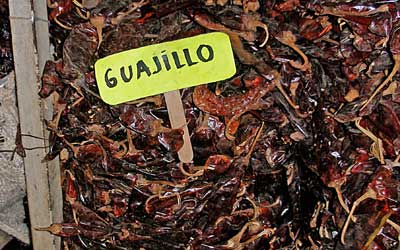
A medium hot, reddish-brown, slender, pointed dried chilli. It has tannic character, smoky like green tea. It is used for its colour. Only a small amount is needed.
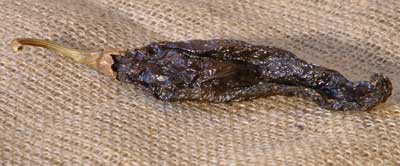
Dried form of Chilaca chilli. It is fairly hot, long, thin and rusty-coloured. It also has a slight liquorice flavour. It is used to give the dark chocolate colour to moles.
Green poblano peppers stuffed with a sauce of soured cream (US: cultured sour cream) mixed with walnuts and red pomegranate. It is designed to recreate the colours of the Mexican flag.
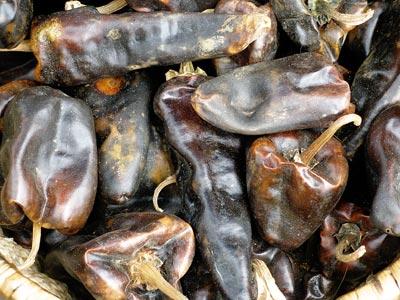
A square-shaped chilli from Oaxaca and Chiapas used, dried, in the famous moles. It is long, about 7-8 cm (3") and tapers to a point. The Amarillo version of the Chilhuacle is extremely rare, quite mild and with a smoky flavour. Heat = 4.
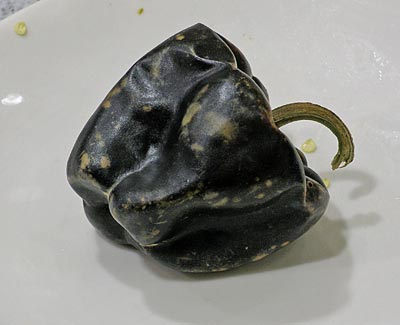
A square-shaped chilli from Oaxaca and Chiapas used, dried, in the famous black moles or those regions introducing a subtle, spicy heat. It is uncommon outside Mexico. It is quite mild and with an intense fruit and smoky flavour amd has been described as having tones of dried plum, tobacco and liquorice. Heat = 4.
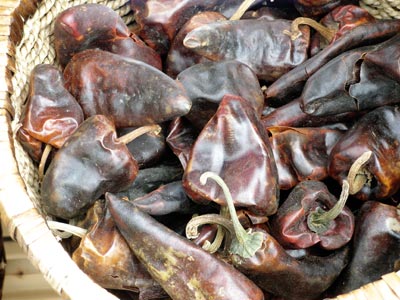
A dark red, medium hot, square-shaped chilli used in the famous moles of Oaxaca and Chiapas in Mexico, from where it comes. The lantern-shaped fruits are about 6-7 cm (2½") wide by 4 cm (1½") long. Heat = 3.